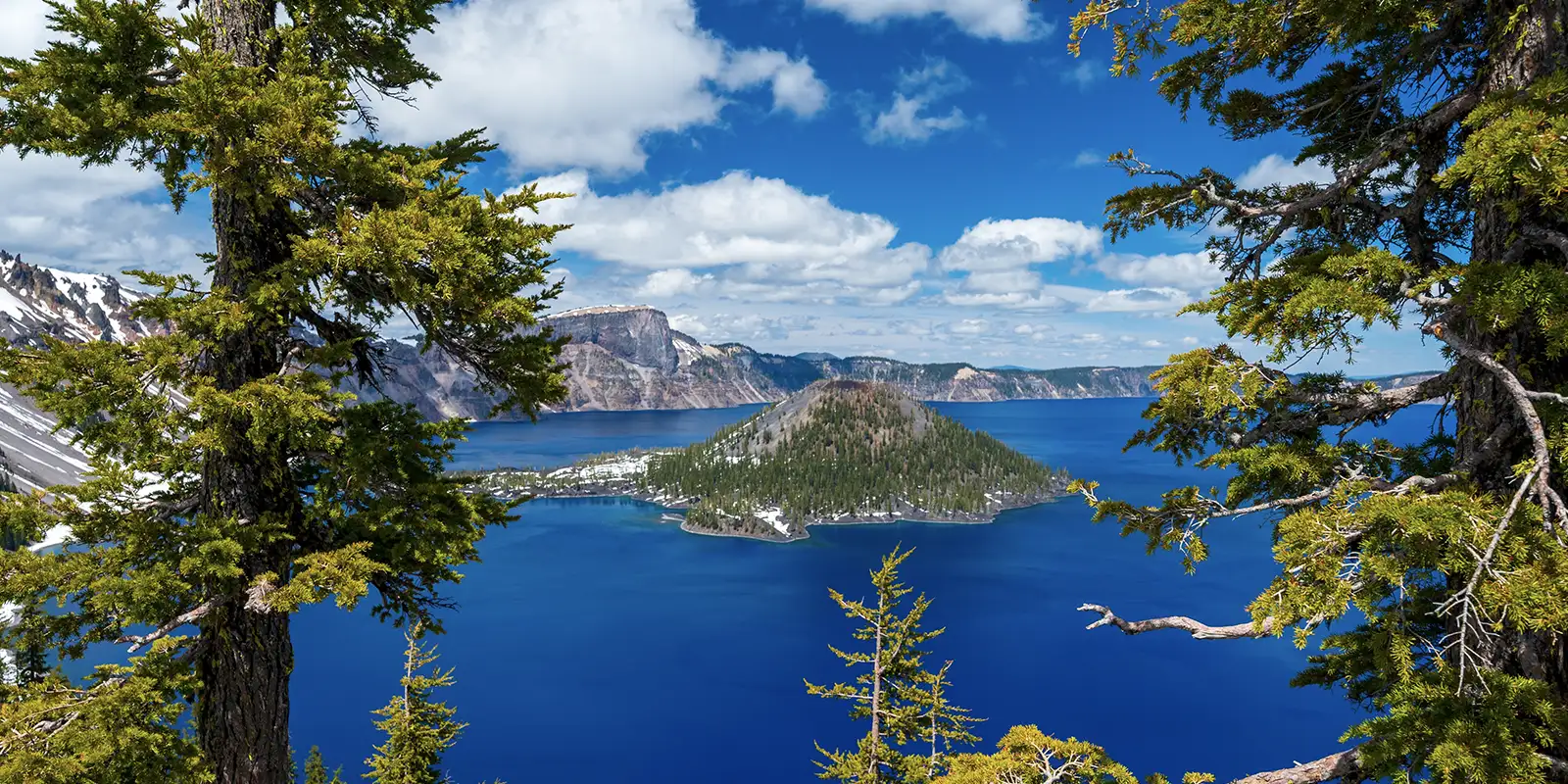Crater Lake stands as a testament to the awe-inspiring power of nature. With its sapphire-blue waters and breathtaking surroundings, it’s no wonder this natural wonder draws visitors from far and wide. Visitors to Crater Lake will be awestruck by its sheer beauty, geological history, and unique ecosystem.
Crater Lake is considered by many to be one of the most beautiful places in the United States. It is not included in the seven wonders of the world, yet many believe that it should be because of its geological uniqueness and significance.
Crater Lake History and Facts
The lake’s formation began around 7,700 years ago with the cataclysmic eruption of Mount Mazama, a towering volcano. This eruption, one of the largest in North American history, was so massive that it caused the mountain to collapse into itself and form a caldera.
Over time, rainwater and snowmelt began to accumulate in the caldera. With no natural outlets to the ocean, the accumulating water gradually filled the caldera and created a deep lake. Crater Lake reaches a maximum depth of 1,949 feet (594 meters), making it the deepest lake in the United States and the tenth deepest in the world.
Crater Lake is also considered one of the clearest lakes in the world, thanks to its limited inflow of sediment-laden water. The lake’s incredible clarity and purity give it a stunning, vivid blue color. The water appears exceptionally blue because it absorbs most of the colors of the visible spectrum and reflects blue light.
National Park and Activities
This natural wonder is enshrined within the vast expanse of Crater Lake National Park, a sprawling 183,000-acre wilderness established in 1902. The park is a sanctuary for those who seek the beauty of nature and the exhilaration of outdoor activities.
Popular activities at Crater Lake include hiking, scenic driving, and swimming. The water in Crater Lake is chilly, even during the summer months. Water temperatures typically average around 50-60°F (10-16°C) in the summer, so some swimmers opt to wear wetsuits or drysuits to stay warm. Cleetwood Cove is the only swimming area at Crater Lake.
Crater Lake’s edge is accessible only via the Cleetwood Cove trail, a challenging trek that takes a little more than 1 hour to complete. For those who prefer not to hike or swim, Crater Lake Scenic Drive offers breathtaking views of the lake. This 33-mile driving loop circumnavigates the entire lake and takes about 2 hours to complete.
Duration of Trip
Travelers who can only spare a day can still experience the park’s main highlights, but two to three days is recommended for a more comprehensive visit. This allows for multiple hikes, the scenic boat tour, and time to explore the Pinnacles and Wizard Island. Travelers with four to five days can indulge in a wider range of activities, including backcountry camping, long hikes, stargazing, and fishing.
Fish Of Crater Lake
Shore fishing is allowed at Crater Lake, where salmon and trout are the most popular catches.
The lake is also home to the Mazama newt, a unique fish species found nowhere else in the world. These striking creatures, with their orange bellies and black speckles, are one of Crater Lake’s most treasured inhabitants.
Crater Lake Climate
Crater Lake’s climate varies throughout the year, with summers being the mildest and the most ideal time to visit. Daytime temperatures in the summer typically range from 60°F to 70°F. (15°C to 24°C). Late spring and early autumn are also good times to visit, with temperatures ranging from 55°F to 60°F. (13°C to 15°C). Winters see the park cloaked in a snowy wonderland, and daytime temperatures generally fall in the 20°F to 35°F (-6°C to 2°C) range. Visitors should be prepared for rapidly changing weather patterns, regardless of the season.
For more information about Crater Lake, visit https://www.craterlake.net.







